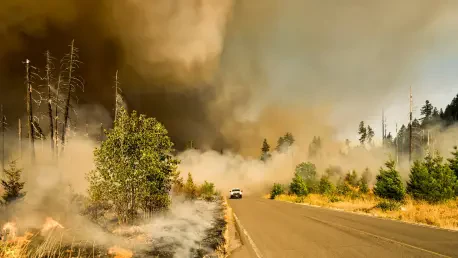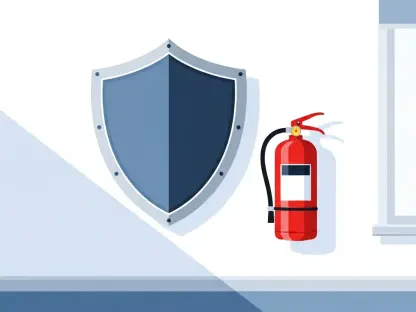In the current climate of heightened wildfire risks, an increasing number of homeowners in rural Oregon and Washington face significant challenges in obtaining fire insurance. This issue is starkly represented in the story of Ethelene Gardner of Klickitat County, whose experience highlights a widespread problem affecting residents of fire-prone regions. Despite implementing comprehensive preventive measures to safeguard properties against fires, homeowners like Gardner often confront unexpected policy cancellations. This unsettling trend not only leaves these communities with diminished financial security but also fuels a prevailing sense of frustration and vulnerability. The factors driving this insurance crisis are multifaceted, encompassing industry-wide reactions to past disasters, evolving legislative approaches, and the stark reality of a changing natural environment.
Rising Insurance Challenges
Homeowners such as Gardner find themselves baffled as efforts to adhere to fire safety guidelines go unrecognized by insurance providers. Many have invested considerable time and resources in clearing brush, removing flammable materials, and even coordinating with power companies for safety evaluations. Nonetheless, these proactive measures have not shielded them from experiencing non-renewals of their fire insurance policies. The collective sentiment among these property owners is one of deep frustration, as they find themselves embattled in securing essential coverage. This situation breeds a sense of helplessness, as their diligent efforts feel futile against the backdrop of policy decisions made by insurance companies. For residents in rural areas, the disconnect between their preparedness and the reactions of their insurance providers adds an additional layer to their assurance in protecting their homes.
The growing pattern of canceled fire insurance policies reflects not only individual homeowners’ struggles but also a broader issue within the insurance landscape. Increasingly, it appears that the insurance industry’s risk management strategies do not align well with individual efforts to mitigate potential hazards. This widespread issue underscores the challenges faced by rural property owners who are battling not just natural elements but also institutional barriers. As concerns intensify, affected homeowners demand greater acknowledgment and rewards for their safety measures. They seek a more empathetic approach from insurers, one that supports and incentivizes homeowners’ proactive stances against the encroaching threat of wildfires. This call for empathy underscores the need for the insurance sector to implement fairer practices that genuinely account for individual risk reduction efforts.
Systemic Shifts and Industry Response
The impetus behind these widespread insurance cancellations can be traced back to the repercussions of the catastrophic 2020 Labor Day fires. This disaster, which decimated over 4,000 homes in Oregon alone, sent shockwaves through the insurance industry and resulted in massive financial losses reaching billions of dollars. In response, carriers have adopted stringent underwriting criteria aimed at minimizing exposure to what they regard as high-risk territories. Unfortunately, these revised criteria often exclude individual homeowners’ preventive actions, resulting in blanket denials of coverage in areas deemed susceptible to wildfires. This shift in policy reflects a broader trend in the industry, where the focus has aligned less with individual circumstances and more with minimizing potential financial liabilities.
Insurance providers’ decision to retract coverage from these high-risk zones, regardless of individual homeowners’ efforts, marks a fundamental change in how risk is evaluated and managed. This approach not only disregards the extensive measures taken by diligent and responsible homeowners but also highlights the ongoing struggle within the industry to effectively balance risk assessment with customer needs. The uniform application of these policies has significantly impacted the trust and reliability once placed in insurance protection. As this insurance dilemma unfolds, it accentuates a need for insurance companies to recalibrate their evaluation metrics to consider preventive actions and foster a more balanced approach. It raises questions about the sustainability of current models and pushes for strategies that recognize and reward the individual actions of those living in wildfire-prone locales.
Legislative Action and Its Impact
In response to the escalating challenges of wildfire risks, Oregon and Washington legislators have introduced a series of bills aimed at addressing these pressing issues. In Oregon, House Bills 3666 and 3917 are centered around mitigating the liabilities for utility-caused wildfires through a “wildfire safety certificate.” This certificate offers protections to utilities that implement state-approved mitigation plans, although it has sparked debate about the consequences for consumers. Additionally, the proposal includes the creation of a catastrophic wildfire fund financed by ratepayers, aimed at distributing financial burdens. Proponents argue that such measures could stabilize utility operations, while opponents believe this could unjustly shift financial responsibilities to consumers.
In Washington, Senate Bill 6120 mandates the creation of a “Wildfire Risk Map,” aimed at providing clear insights into the varying degrees of fire risk across counties. The intention is to inform and educate, yet this measure has generated mixed reactions among rural homeowners. While some appreciate the transparency, others worry about the potential for increased insurance premiums and the possibility of policy cancellations solely based on these risk assessments. For residents like Gardner, the legislative efforts, although well-intended, fall short of providing immediate solutions. The perceived unfairness lies in the fact that these measures focus more on broader structural changes rather than addressing the real and immediate insurance access issues faced by the average homeowner.
Homeowners’ Dilemma
One profound challenge persists for Oregon and Washington residents: despite the legislative efforts in place, many homeowners like Gardner still encounter significant obstacles in securing necessary insurance coverage. These obstacles stem from what is perceived as a lack of responsiveness to individual fire risk mitigation actions in legislative frameworks. The controversy is further compounded by the “legacy clause,” which seems to benefit long-standing policyholders while alienating new applicants and those needing renewal. This clause, seen by many as fostering inequity, suggests an uneven playing field where insurance access is skewed.
The situation reflects a disconnect where new applicants often find themselves at a disadvantage, despite having complied with safety measures and adhering to best practices for fire prevention. As a result, these inequities heighten feelings of disenfranchisement and disillusionment among residents who feel their efforts are underappreciated and unrewarded. This perception of unfair access highlights the ongoing struggle within this segment of the population, further polarized by legislative measures that appear to offer limited actual relief. Homeowners seek legislative amendments that bridge these gaps, enabling equitable access to essential insurance coverage irrespective of one’s policy history.
The Broader Implications
Homeowners like Gardner are bewildered as their efforts to follow fire safety guidelines remain unacknowledged by insurance companies. These individuals have put considerable time and money into clearing brush, eliminating flammable materials, and collaborating with power companies on safety inspections. Despite their proactive measures, they still face the non-renewal of their fire insurance policies. This leaves them deeply frustrated, feeling powerless as they struggle to secure essential coverage. Particularly in rural areas, there’s a significant disconnect between how prepared these homeowners are and their insurance providers’ responses.
This troubling pattern of canceled policies highlights a larger issue within the insurance industry. It seems that the industry’s risk assessments do not align with individual efforts to reduce fire hazards. This challenging situation affects rural homeowners who face both natural threats and institutional barriers. They call for greater recognition and rewards for their safety initiatives. A more empathetic response from insurers is needed, emphasizing fairer practices that truly consider individual risk reduction efforts.









